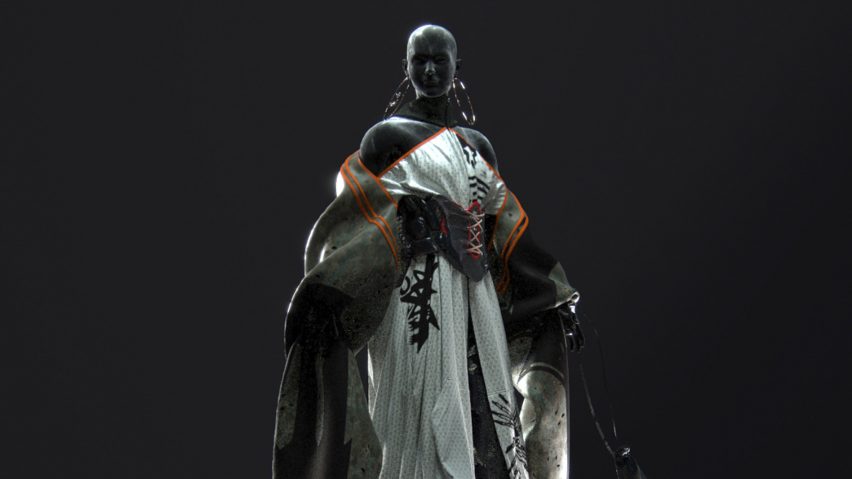
The Fabricant designs gender-fluid digital clothes informed by the Renaissance
Digital-fashion house The Fabricant has collaborated with RTFKT to create the gender-fluid RenaiXance collection of digital garments, which were minted as NFTs.
The Fabricant and digital-shoe designer RTFKT's RenaiXance collection was informed by clothing from the Renaissance period and plays with the theme of rebirth.
It features pieces – including robes – that nod to the styles of the era, but were made purely for a digital universe and minted as Non Fungible Tokens (NFTs).
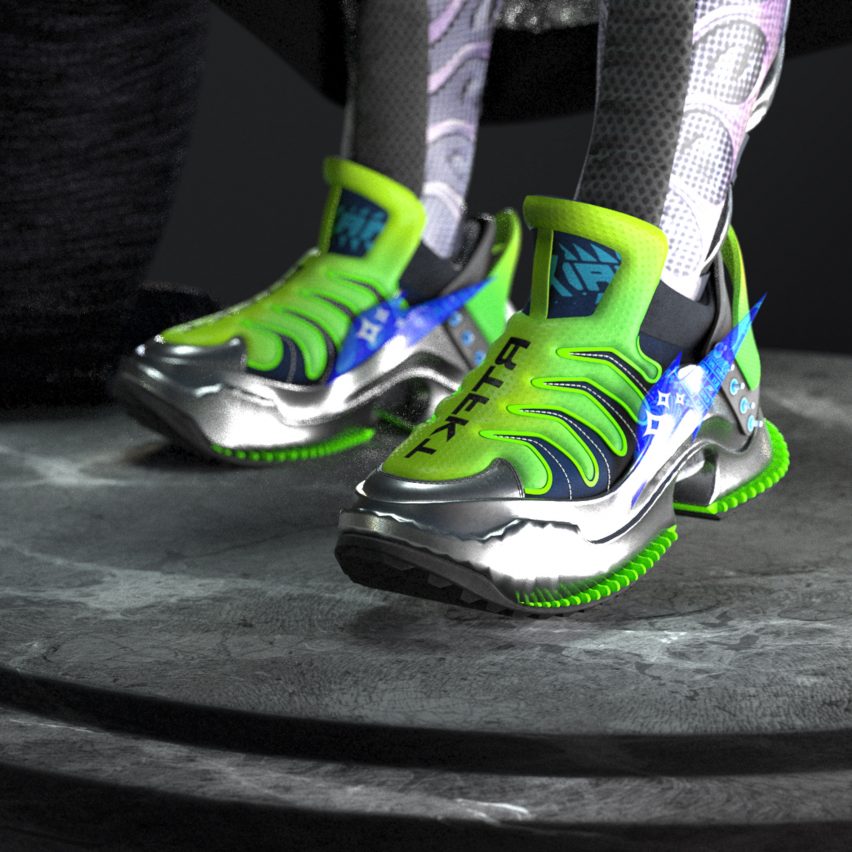
"RenaiXance means to rebirth, pointing to the fact that in the digital world we can be reborn time and time again, transforming daily to express multiple selves," The Fabricant's head of content Michaela Larosse told Dezeen.
"Our work exists purely in the non-physical space, meaning our pieces are always digital, never physical."
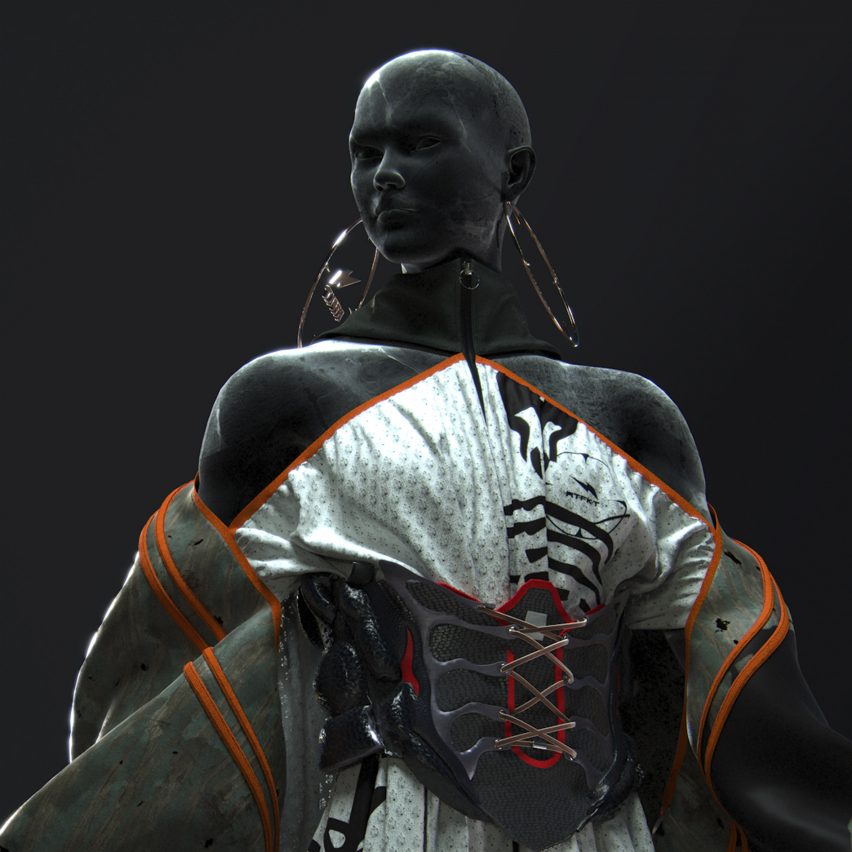
RenaiXance aims to reimagine binary constructs of clothing, reinterpreting traditional ideas of masculinity and femininity through a renaissance-meets-streetwear lens.
"Does a character become any less intriguing if it’s wearing a robe and corset regardless of gender?" the brand asks.
The collection comprises platform trainers designed by RTFKT, a corset that took cues from the trainer design, a trio of Renaissance-style robes, large hooped earrings and a ring.
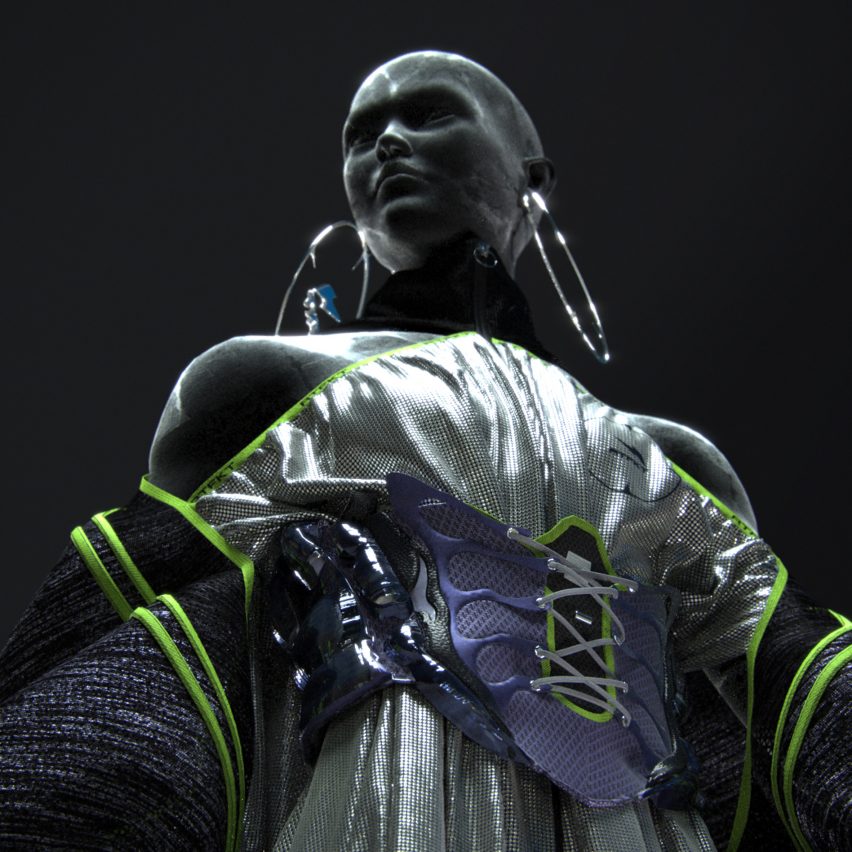
"For this collaboration with RTFKT, we wanted to present a collection with a clear vision of digital fashion's capacity to be fluid and move beyond preconceived gender norms," Larosse said.
"With RenaiXance we presented the idea of a 'Pluriform' – a multi-expression garment silhouette that can be worn on any body of any size," she added.
"Digital fashion has an obvious application in the gaming world, yet gaming visuals and Skins still conform to gender ideas established in the physical world, pushing historic notions of masculinity and femininity."
The garments can be worn virtually, for example on social media platforms and by avatars in games, allowing users to express themselves in gaming and digital environments that are typically more limiting when it comes to clothing options.
All the pieces were designed with a digital centre of gravity, which allows the garments to drape and move as if physical items of clothing.
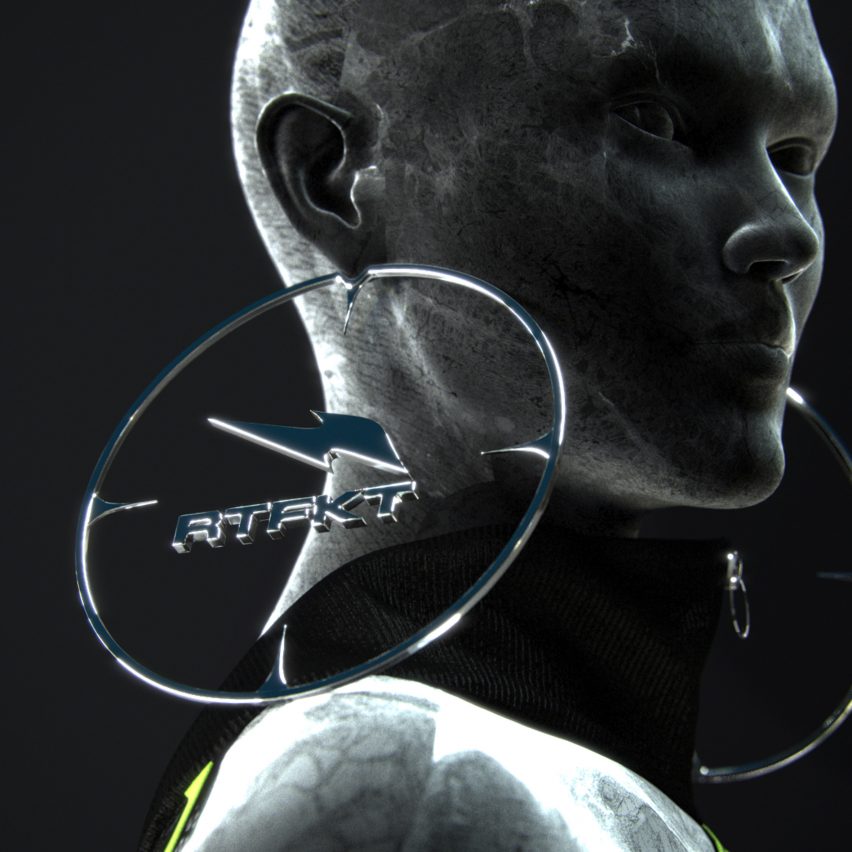
The digital garments were minted as NFTs and available to purchase on the site The Dematerialised, an invite-only online marketplace for digital fashion, where they sold out in 11 minutes.
Blockchain technology enables NFTs to act as digital certificates of ownership that allow digital works to be bought, sold, traded and collected.
Larosse explained that through minting the items at NFTs, the digital garments have an entire life beyond The Fabricant. Purchasers can choose to wear, collect or trade the clothes.
"The garments have utility to be worn in VRChat and Sansar, so we hope to see avatars wearing our pieces in the metaverse," said Larosse.
"But if buyers want to keep them as collector's items or trade them on digital marketplaces as limited edition pieces then that's entirely their choice."

The increasing popularity of NFTs has seen artists and designers use the blockchain authentication system to sell immersive and digitally interactive works.
The future of augmented reality has been dubbed by some as a "creative and artistic Renaissance" that will change the way people interact with physical and digital space.
Recently, The Fabricant released a pair of digital trainers in collaboration with Buffalo that can only be worn in video games and artist Krista Kim sold the world's first NFT digital home that can be experienced in virtual reality.